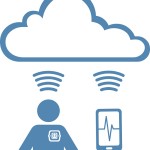With the COVID-19 pandemic shuttering physician offices and walk-in clinics, patients and doctors across Asian markets have turned increasingly to telehealth solutions. The surge is creating a short-term boom—and the likelihood of a long-term shift to telemedicine of all kinds.
To date, telemedicine, the distribution of health-related services and information via electronic telecommunications technologies, has been slow to catch on in many Asian markets. In some countries, its growth has been stymied by a lack of technology. In others it has received little government support. Most Asian patients and clinicians are accustomed to a private consultation in an examination room—the gold standard in medical care.
The novel coronavirus has upended all that. Asian governments have made an about face from skepticism about telehealth to encouragement. In the last month alone, South Korea eased restrictions on telehealth offerings. Japan launched a free government-based telehealth service. Thailand developed a platform for data collection and sharing between public health agencies. And China built a platform in 10 days that allows doctors to meet with patients and other doctors remotely.
Why Has Telemedicine Taken So Long to Take Off in Asia?
Telemedicine would seem to be an ideal solution in Asian markets, where patients often live at some distance from medical facilities, and where unreliable roads and transportation networks (in some developing Asian countries) sometimes make it difficult to get to a doctor’s office or testing site.
But to catch on, telemedicine needs a number of drivers. The first is receptivity by doctors and patients. In Asia and elsewhere, physicians have been slow to adopt telemedicine technologies, worried they will not be adequately reimbursed by government insurance for services they provide remotely.
Governments in Asian markets have also strongly regulated telemedicine options. And in some areas, high speed internet and other technologies needed to share test results, images and real-time data are sometimes lacking.
Finally, in Asia as elsewhere, cultural norms strongly tend toward in person patient care, even for initial, screening appointments.
What Is Changing?
The COVID-19 crisis is changing everything for the telemedicine landscape—and fast. As the situation makes it difficult, even risky, for doctors to meet with patients on a routine basis, healthcare providers are turning to technology to alleviate shortages and a resource crunch.
MyDoc, a major provider of telemedicine in Asia, has seen big user increases during the pandemic. In Singapore, daily active users of the platform rose 6% in February and more than doubled in March. In Hong Kong, MyDoc has partnered with life insurance company Prudential to offer health services to consumers on their mobile phones, including video doctor consultations, electronic prescriptions, delivery of medicine, online records and electronic medical certificates.
In Indonesia, Thailand, the Philippines, China and Japan, telemedicine giant Tencent Trusted Doctors, in partnership with insurer AXA, is offering free teleconsultations to more than 6.5 million people, many in underserved rural areas, during the pandemic. It has established a dedicated hotline supported by 450,000 professional medical doctors and psychologists. A dedicated Mental Wellness Helpline that uses the WeChat chat and video app will also go live in May.
In China, the number of new users on Ping An Good Doctor, a Chinese healthcare services platform, grew nearly 900% between December and the end of January this year.
Also in China, Yilijie Shanghai Information Technology Co., Ltd. is working with Microsoft to introduce a remote consultation platform that allows doctors at two hospitals to connect with each other and patients online. The platform employs cloud computing, big data and artificial intelligence in the pilot program, which is slated to expand in scope in coming months.
In Indonesia, telehealth firm HaloDoc has seen usage skyrocket over the past month, aided in part by move by the country’s Ministry of Health to partner with it and ride-hailing giant Gojek to offer quick COVID-19 diagnostics in remote areas.
In Japan, government support for telemedicine started to grow two years ago, when the government first allowed insurance reimbursement for telehealth services. Since then, MRT Inc., Micun and Medley Inc. have become players in the emerging telehealth market. Since the COVID-19 virus made its appearance, all are offering some version of health and medical consultation call services about the virus. And insurance companies are making those services free to policyholders and their family members.
Where Does Telemedicine in Asia Go from Here?
Telemedicine, slow to gain acceptance for years in Asian markets, has been gaining credibility and traction, especially in countries with high levels of consumer technological savvy. That trend has been put on warp speed by the pandemic. Offered in many places for free during the crisis, it is beginning to change patient and doctor expectations and behavior. Further technological innovation and further government involvement to manage privacy concerns, particularly concerning the transmission of private medical data will continue to grow. Telemedicine shows major promise in alleviating long lines for doctor visits and minimizing costs. Driven by the COVID-19 pandemic, telemedicine will soon become the new normal.







